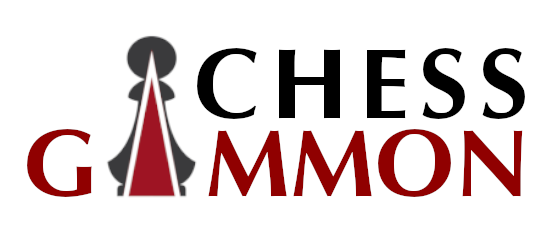Welcome, chess enthusiasts! we’re going to dive into the fascinating world of the King’s Indian Attack. This strategic opening is not only popular among players of all levels but is also an exciting way to start your game with a bang! So, let’s explore what makes the King’s Indian Attack so special. Feel free to also take a look at: 40 Famous Chess Moves to Learn.
- Introduction to the King’s Indian Attack
- History of the King’s Indian Attack
- Key Ideas and Strategies
- Common Openings and Variations
- Advantages and Disadvantages of the King’s Indian Attack
- Famous Games and Players
- How to Improve Your King’s Indian Attack Game
Introduction to the King’s Indian Attack:
Picture this: you’re sitting across the board from your opponent, ready to make your first move. Instead of following the traditional lines of the King’s Pawn or Queen’s Pawn openings, you decide to mix things up with the King’s Indian Attack. This versatile opening allows you to quickly develop your pieces, control the center, and launch powerful attacks against your opponent.
One of the key features of the King’s Indian Attack is its flexibility. You have the freedom to transpose into different pawn structures and adapt your strategy based on your opponent’s moves. Whether you prefer a solid positional game or a sharp tactical approach, the King’s Indian Attack gives you the tools to play to your strengths.
As you navigate through the complexities of the King’s Indian Attack, you’ll learn to appreciate the interconnections of your pieces and how each move sets the stage for your next strategic maneuver. By mastering this opening, you can unleash your creative potential on the chessboard and surprise your opponents with your dynamic play
History of the King’s Indian Attack
If you’re a chess enthusiast looking to up your game, the King’s Indian Attack may very well be a strategy worth delving into. But before we dive into the intricacies of this powerful opening, let’s take a step back and explore its rich history.
The King’s Indian Attack first gained prominence in the 19th century, thanks to its ingenious development by players like Wilhelm Steinitz, the first World Chess Champion. However, it wasn’t until the 20th century when players like Bobby Fischer and Garry Kasparov popularized the opening that it truly came into the limelight.
This strategic system involves White playing moves like 1. e4, followed by d3, Nf3, g3, Bg2, and 0-0, while withholding the d4 pawn break until later in the game. The idea behind this approach is to control the center, develop harmoniously, and prepare for a flexible pawn break when the time is right.
The King’s Indian Attack is characterized by its versatility and adaptability to various pawn structures and positions. It allows White to dictate the pace of the game, take control of the center, and launch swift attacks against the opponent’s king.
Throughout its history, the King’s Indian Attack has been used by top players to great effect in grandmaster-level games. Its strategic depth and dynamic nature have made it a favorite among chess players seeking a
Key Ideas and Strategies
So you’re interested in learning more about the King’s Indian Attack? Great choice! This opening is known for its aggressive play and strategic ideas that can catch your opponent off guard. Let’s dive into some key concepts and strategies that can help you master this exciting opening:
Control the Center: In the King’s Indian Attack, it’s crucial to control the center of the board. By placing your pawns in the center early on, you can establish a strong presence and limit your opponent’s options. This can give you more space to maneuver your pieces and launch powerful attacks.
Kingside Attack: One of the key ideas of the King’s Indian Attack is to launch a pawn storm on the kingside. By advancing your pawns and pieces towards your opponent’s king, you can create threats and put pressure on their position. This aggressive approach can lead to quick victories if not properly defended against.
Develop Your Pieces: In any opening, it’s crucial to develop your pieces efficiently. In the King’s Indian Attack, focus on getting your pieces out quickly and coordinating them towards your opponent’s weaknesses. By developing harmoniously, you can create a strong attacking force that can overwhelm your opponent.
Common Openings and Variations:
The common openings and variations is key. Let’s dive into some essential knowledge to elevate your play.
1. Classical Variation:
The Classical Variation is a popular choice for players adopting the King’s Indian Attack. It often involves a pawn storm on the kingside, aiming to create an attack against the opponent’s king. By pushing pawns aggressively, you can gain space and control in the center, setting the stage for a powerful onslaught.
2. Fianchetto Variation:
The Fianchetto Variation involves developing your bishop to g2, enabling it to exert pressure along the long diagonal. This setup allows for a solid defense while maintaining an aggressive posture. By fianchettoing your bishop early on, you can control key squares and prepare for future attacks.
3. Maroczy Bind:
The Maroczy Bind is a strategic setup that aims to restrict your opponent’s counterplay. By maintaining a pawn structure that controls key squares, you can limit your opponent’s options and dictate the flow of the game. This solid foundation provides a platform for launching your own attacks while keeping
Advantages and Disadvantages of the King’s Indian Attack
The King’s Indian Attack is a versatile and dynamic opening that has been favored by many chess players throughout history. Let’s take a closer look at some of the advantages and disadvantages of this strategic opening.
Advantages:
Flexible pawn structure: One of the key advantages of the King’s Indian Attack is its flexible pawn structure. This allows for a variety of pawn breaks and positional maneuvers, giving you the opportunity to adapt to your opponent’s moves.
Development of pieces: The King’s Indian Attack allows for quick and harmonious development of your pieces. By employing a solid pawn structure and getting your pieces out efficiently, you can gain a strong initiative and put pressure on your opponent early on.
Attacking chances: With its aggressive setup, the King’s Indian Attack provides ample attacking chances. By pushing your pawns forward and coordinating your pieces effectively, you can launch powerful attacks against your opponent’s king and create tactical opportunities.
Psychological impact: The King’s Indian Attack can sometimes catch your opponent off guard, as it is a less common opening choice. This can give you a psychological
Famous Games and Players
Let’s take a trip down memory lane and explore some of the most famous games and players associated with the King’s Indian Attack. These games have left a lasting impact on the chess world and have served as inspiration for many aspiring players.
Bobby Fischer vs. Boris Spassky – 1972 World Chess Championship
One of the most iconic games featuring the King’s Indian Attack was played during the 1972 World Chess Championship between Bobby Fischer and Boris Spassky. Fischer, known for his innovative and aggressive style, employed the KIA with great success in this match. The game showcased the dynamism and power of this opening, leaving a lasting impression on chess enthusiasts worldwide.
Garry Kasparov’s Creative Brilliance
Garry Kasparov, widely regarded as one of the greatest chess players of all time, demonstrated his prowess with the King’s Indian Attack in numerous games throughout his career. His creative and aggressive playstyle left opponents struggling to find counterplay, solidifying his reputation as a dominant force in the chess world.
Judit Polgar’s Tactical Masterpieces
Judit Polgar, the strongest female chess player in history, has also showcased the effectiveness of the King’s Indian
How to Improve Your King’s Indian Attack Game
So, you’ve been playing the King’s Indian Attack and you want to take your game to the next level. Great choice! This flexible and dynamic opening can be a powerful weapon in your arsenal. Here are some tips to help you improve your King’s Indian Attack game:
1. Study the Classics
One of the best ways to improve your King’s Indian Attack game is to study the games of masters who have used this opening successfully. Take a look at games by legendary players like Bobby Fischer, Anatoly Karpov, and Garry Kasparov. Pay attention to their strategies, tactics, and the key ideas they employ.
2. Understand the Key Ideas
Make sure you understand the key ideas and strategies behind the King’s Indian Attack. This opening is all about controlling the center, developing your pieces harmoniously, and launching an attack on the enemy king. Study the typical pawn structures and piece placements that arise in this opening.
3. Practice, Practice, Practice
Like any opening, the King’s Indian Attack requires practice to master. Set up positions from this opening and play through different variations. Analyze your games to understand where you






